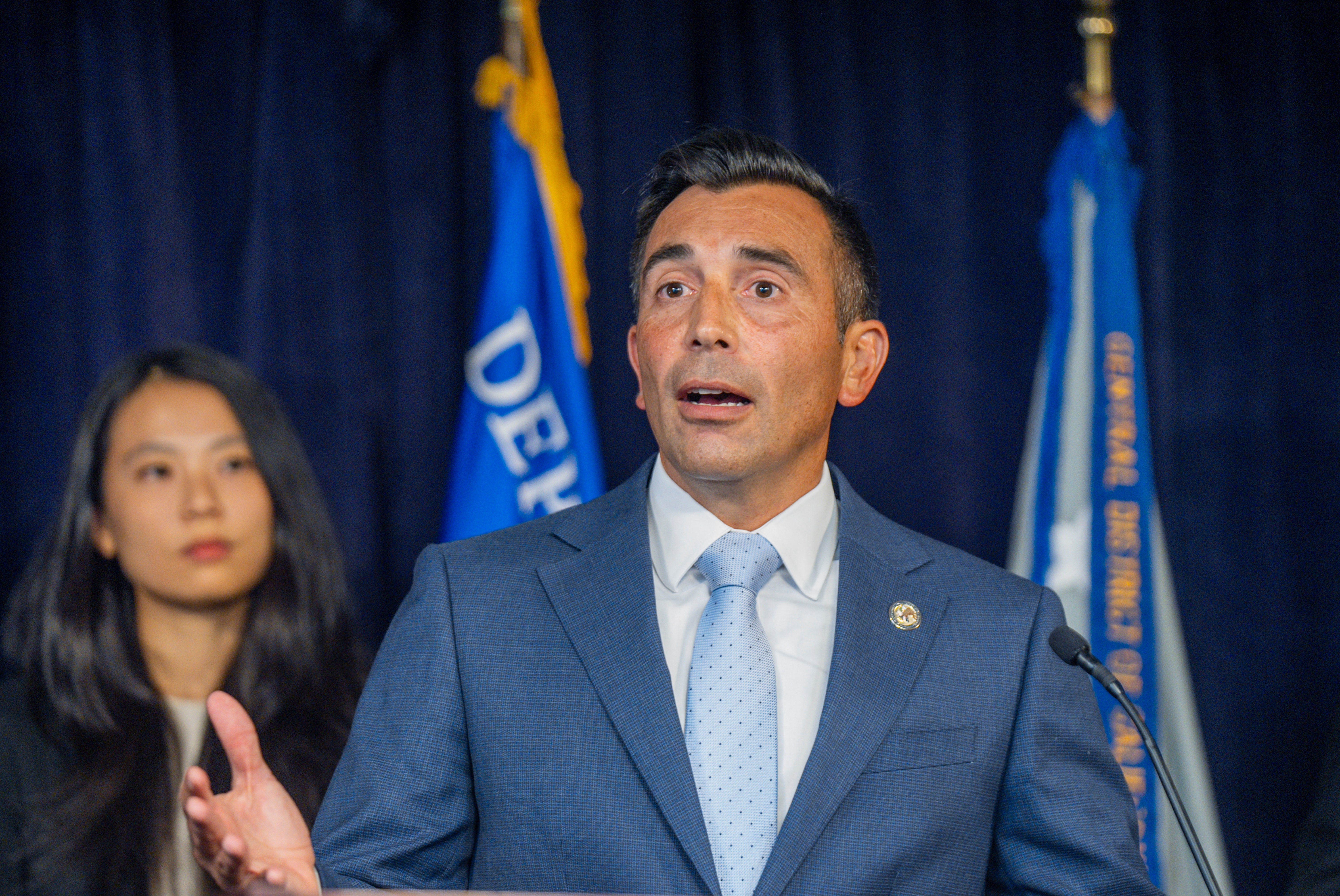Two doctors and a dealer known as the “ketamine queen” are among five people who have been charged in the death of Friends actor Matthew Perry, who died at the age of 54 in late October last year.
This comes after an investigation lasting seven months into the role that ketamine played in his passing. According to the Los Angeles County medical examiner, trace amounts of the controlled substance were found in his stomach. The drug is sometimes used to treat depression.
Since his death, the authorities have been working to understand how Perry got ahold of the drug, which is legal and usually used as an anesthetic but can be abused when used recreationally.
This is what we know so far:
Matthew Perry’s death

Perry’s ketamine use was spiraling out of control in the weeks before his death, the investigation has revealed.
He was injecting the drug between six and eight times a day, and paid $55,000 for it in the month before he died, prosecutors said in court filings this week.
While Perry had been in ketamine infusion therapy as a treatment for depression and anxiety, it wasn’t the therapy that led to his death. Prosecutors say that the actor had been taking unsupervised doses of the drug and that his addiction was “out of control,” according to NBC News.
On October 28, 2023, Perry received his first shot at about 8.30am from Iwamasa, his live-in assistant. The second shot came four hours later and another was injected about 40 minutes after that, Iwamasa stated, according to a plea agreement.
“Shoot me up with a big one,” Perry reportedly told the assistant, before asking him to prepare his hot tub.
After running some errands, Iwamasa returned to the home and found Perry facedown in the water.
The investigation
The Los Angeles County Medical Examiner said in December that Perry had passed away from “acute effects” of ketamine, with the autopsy report stating that the amount of ketamine found in his blood was about the same level as for general anesthesia.
After doctors refused to boost his dosage, Perry had found other means of getting access to the drug, court papers reveal. There were several occasions when the actor experienced negative effects from the drugs, such as when Perry became unconscious and lost his ability to speak following a large dose, according to The New York Times.
The indictment came after an investigation lasting seven months. Prosecutors have accused several of the defendants of taking advantage of Perry’s addiction despite being aware of his struggles and attempts to get sober.
The US attorney for the Central District of California, Martin Estrada, said on Thursday that the defendants “were more interested in profiting off Mr Perry than caring for his well-being.”

Law enforcement agencies executed search warrants and seized computers, phones, and other electronic equipment to determine who was responsible for the supply of the drug which led to the actor’s overdose.
After a medical examiner ruled his death an accident last year, Perry’s passing was considered a closed case.
But almost seven months later an investigation, at both federal and local level, had been opened into who supplied the Friends actor with the ketamine which caused his death.
The investigation into how Perry came to have so much ketamine inside him involved the Los Angeles Police Department (LAPD), the US Drug Enforcement Agency (DEA), and the US Postal Inspection Service (USPIS), the LAPD confirmed in May.
Sources close to the actor said he was undergoing ketamine infusion therapy to treat depression and anxiety. Yet his last infusion therapy was one and a half weeks before his death. The coroner noted that the ketamine in Perry’s system “could not be from that infusion therapy, since ketamine’s half-life is three to four hours or less”.
Who has been charged?
Dr Salvador Plasencia is accused of having provided the drug to the actor, and Perry’s assistant, Kenneth Iwamasa, injected him on the day of his death, filings stated.
Dr Mark Chavez, owner of a San Diego ketamine clinic, is charged in the death. Erik Fleming, a friend of a friend of Perry, allegedly provided the drug, along with Jasveen Sangha, a seller referred to as the “ketamine queen.”

A plea agreement was reached by Iwamasa and two other defendants. Sangha and Plasencia have pleaded not guilty. Their trials are set for October.
Plasencia allegedly taught Iwamasa how to inject Perry with the ketamine, according to prosecutors. At one point, the doctor injected Perry in the backseat of his car during a meeting in Long Beach.
Plasencia saw Perry as a cash cow, the indictment suggests, citing text messages he sent to Chavez about a month before the actor’s death. “I wonder how much this moron will pay,” he wrote in one. “Let’s find out,” he wrote in another.
In a third text to Chavez, Plasencia described meeting Perry as “like a bad movie.”
As Perry looked for further sources of the drug, he was put in touch with Fleming. The pair had a mutual friend, and Fleming told Perry he had a source, Sangha. Fleming, who agreed to cooperate with authorities, at one point sent Iwamasa a picture of a ketamine vial with a horse on the packaging, as the drug is used as an animal tranquilizer.
Court papers state that Iwamasa wrote to Fleming that Perry was “only interested in the unmarked ones, not the horsey version.”
“I did some calling around about the Mexican stuff and it’s fine for people too,” Fleming said.
Sangha is charged with supplying Perry with the ketamine doses that ultimately caused his demise, Estrada said.
On October 12 last year, Plasencia injected Perry with “a large dose of ketamine” that unexpectedly caused the actor to “freeze up,” and spiked his blood pressure, rattling the doctor, according to the indictment. When Plasencia began having supply issues, Perry’s go-betweens branched out to Sangha, who said she had a “master chef” cooking up ketamine for her, the indictment states. And since Perry bought a lot of her product, Sangha provided him with ketamine lollipops as an “add-on,” the indictment states.
In the days leading up to Perry’s death, Iwamasa administered at least 15 shots of ketamine to him, all of which were supplied by Sangha, according to the indictment. It says Iwamasa gave Perry the final three doses of ketamine purchased from Sangha, using needles provided by Plasencia, on October 28, 2023, the date the actor was found dead in his hot tub.

Later that same day, the indictment says Sangha, 41, messaged Fleming on Signal, writing: “Delete all our messages.”
She is charged with one count of conspiracy to distribute ketamine, one count of maintaining drug-involved premises, one count of possession with intent to distribute methamphetamine, one count of possession with intent to distribute ketamine, and five counts of distribution of ketamine.
Prior to her arrest, Sangha appears to have enjoyed taking lavish vacations and club hopping in LA with friends.
Photos shared on her Instagram account appear to show her enjoying a trip to Japan on November 8 – less than two weeks after Perry died.
In the posts, which she labeled as Japan 23, she is seen dressed in a traditional Japanese Kimono, sipping on cocktails, and enjoying views from a skyscraper with friends.

Another holiday posted on the highlights section of her social media profile shows her enjoying a getaway to Mexico in February this year.
Sangha posted pictures sunning herself by a luxurious poolside and overlooking the beach, drinking cocktails.
She has also posed for a number of glamorous photoshoots, including one holding a gun that shoots fake dollar bills.
“Play money, but don’t be playing with my money,” she wrote in the caption.
But besides Perry, Sangha has also been linked to another tragic drug-related death, according to prosecutors.
In August 2019, Sangha allegedly sold ketamine to Cody McLaury, 38, in the hours before he died from an overdose.
Following his death, McLaury’s family members sent Sangha a text message saying her ketamine had killed him, prosecutors said.
After receiving the message, Sangha conducted a Google search for “Can ketamine be listed as a cause of death?” prosecutors said.
According to the indictment, Sangha continued to sell ketamine from her stash house after McLaury’s death.
Estrada described Sangha’s home in North Hollywood as a “drug-selling emporium” and called it the “Sangha Stash House” in the indictment. It is where she allegedly packaged and distributed the drugs for her “high-end” and celebrity clients.
What sentences are they facing?
Iwamasa faces up to 15 years in prison, Fleming as much as 25 years, and Chavez as much as 10 years behind bars, The New York Times reported.








